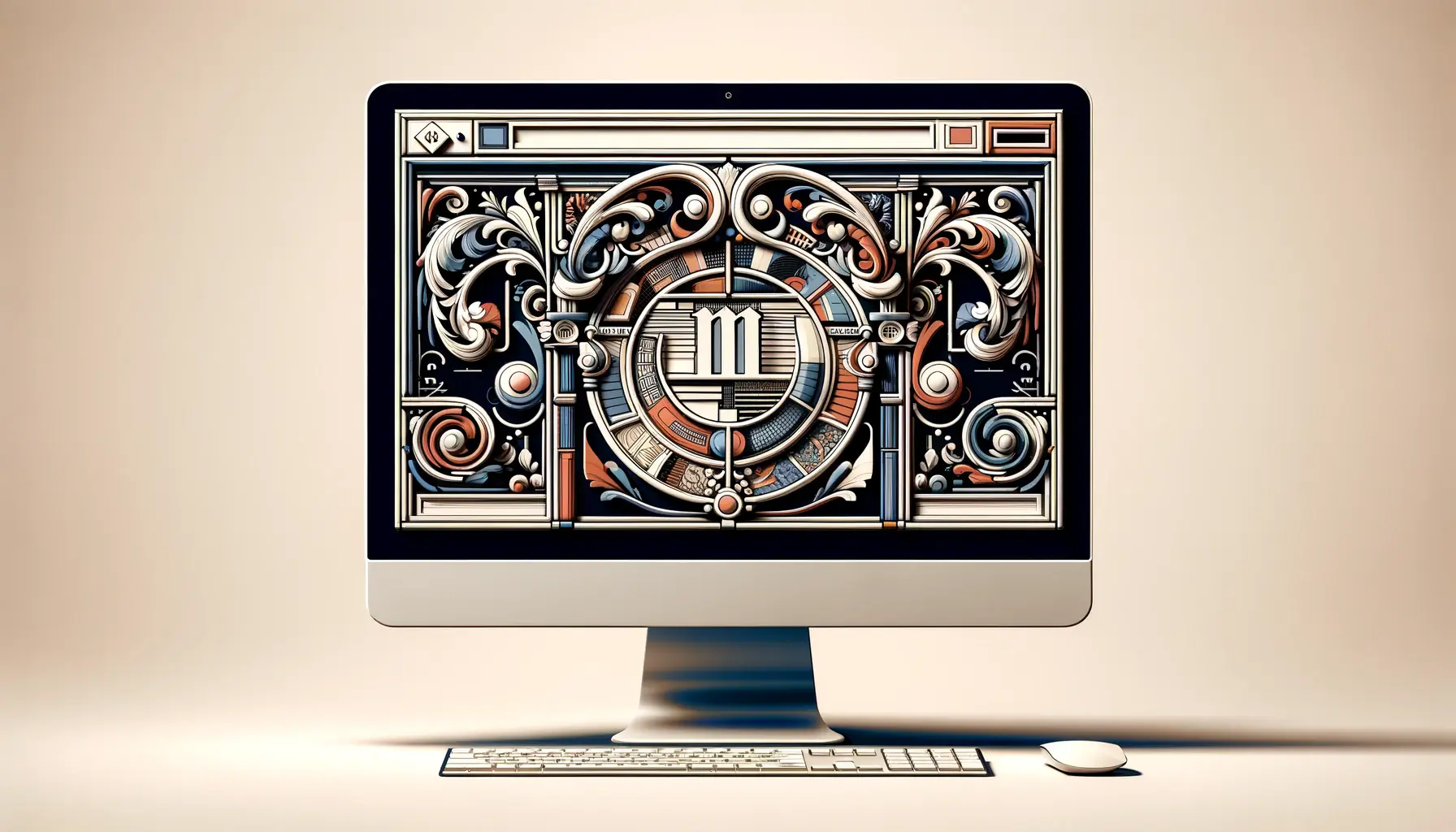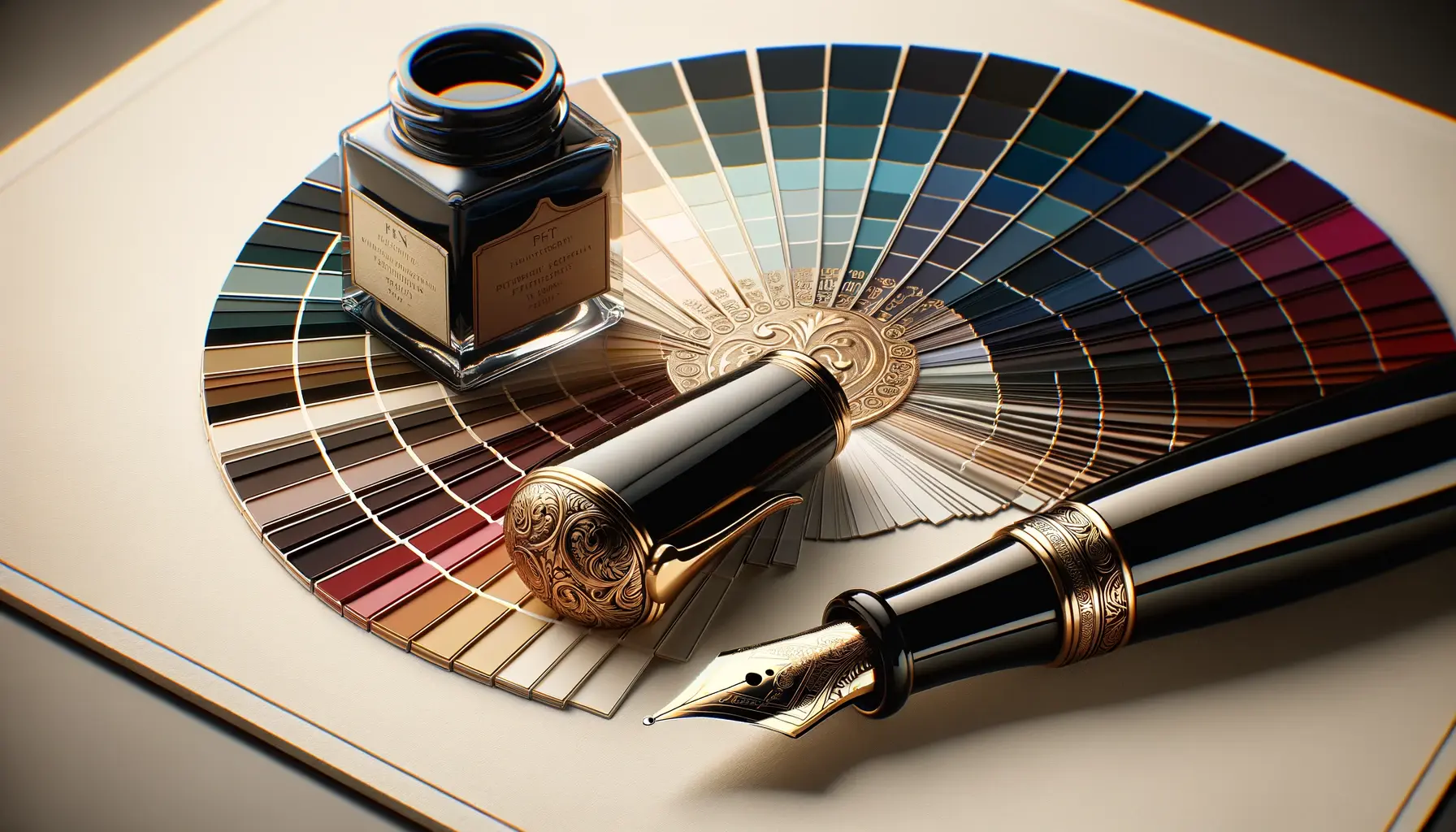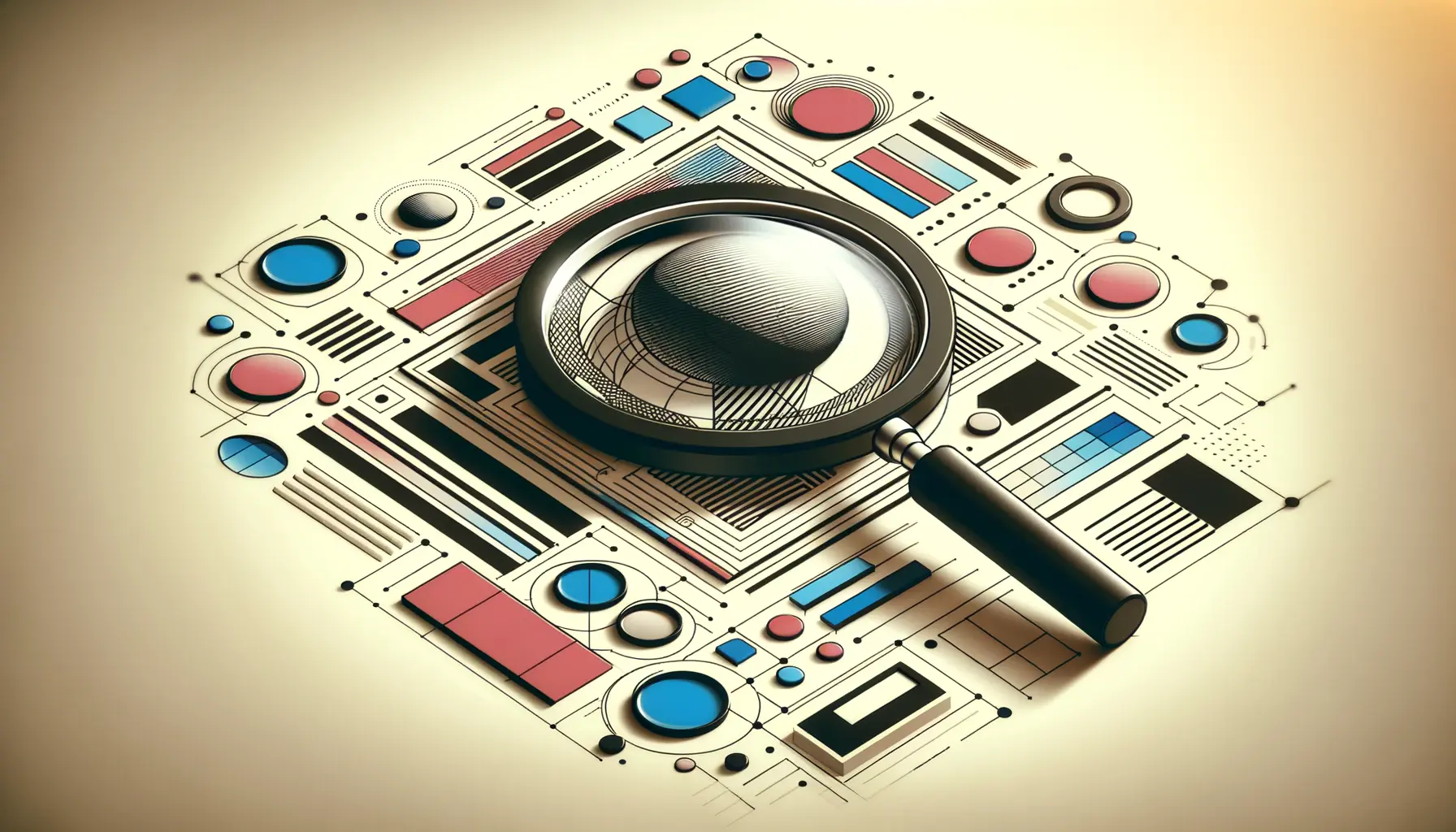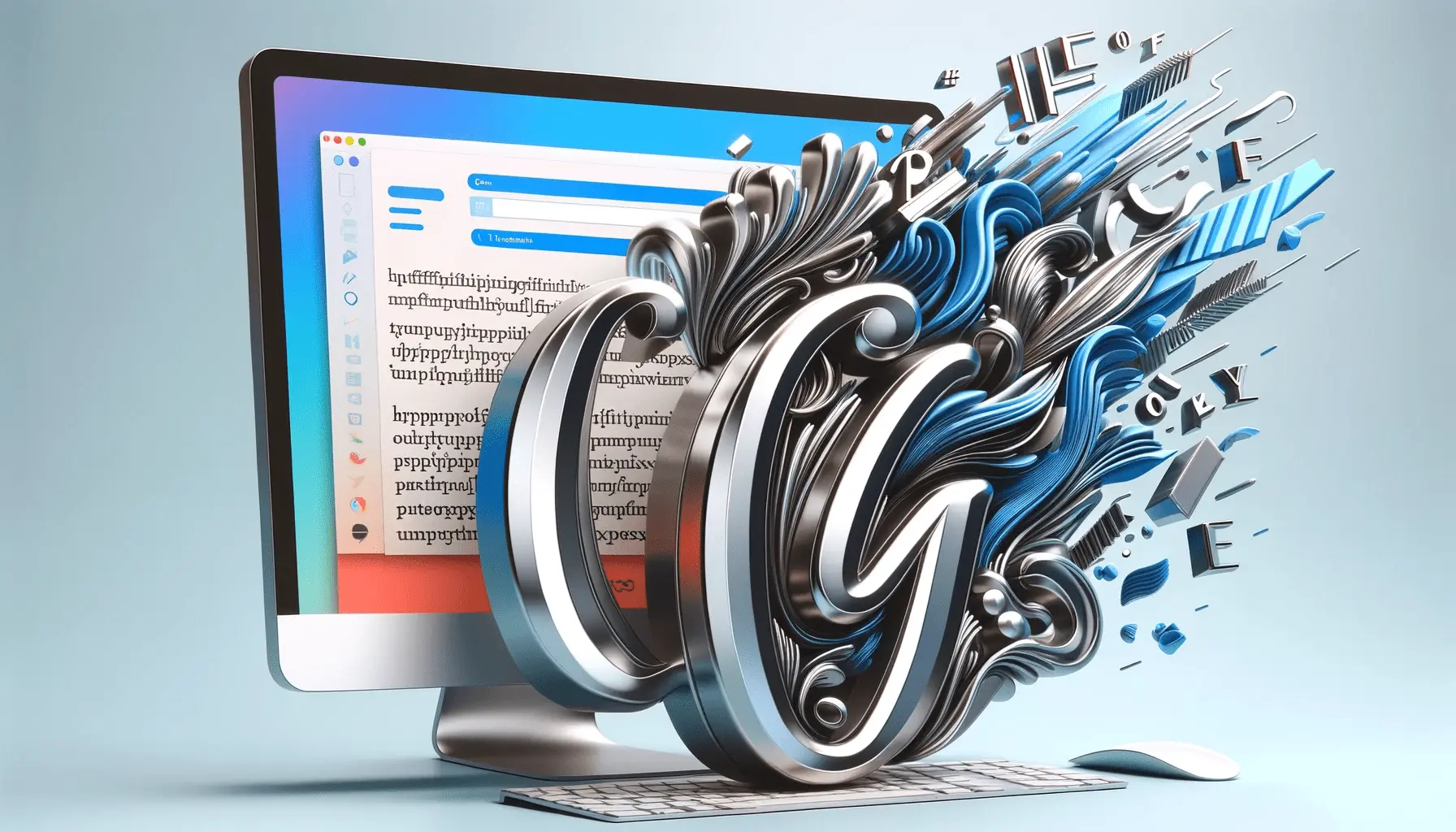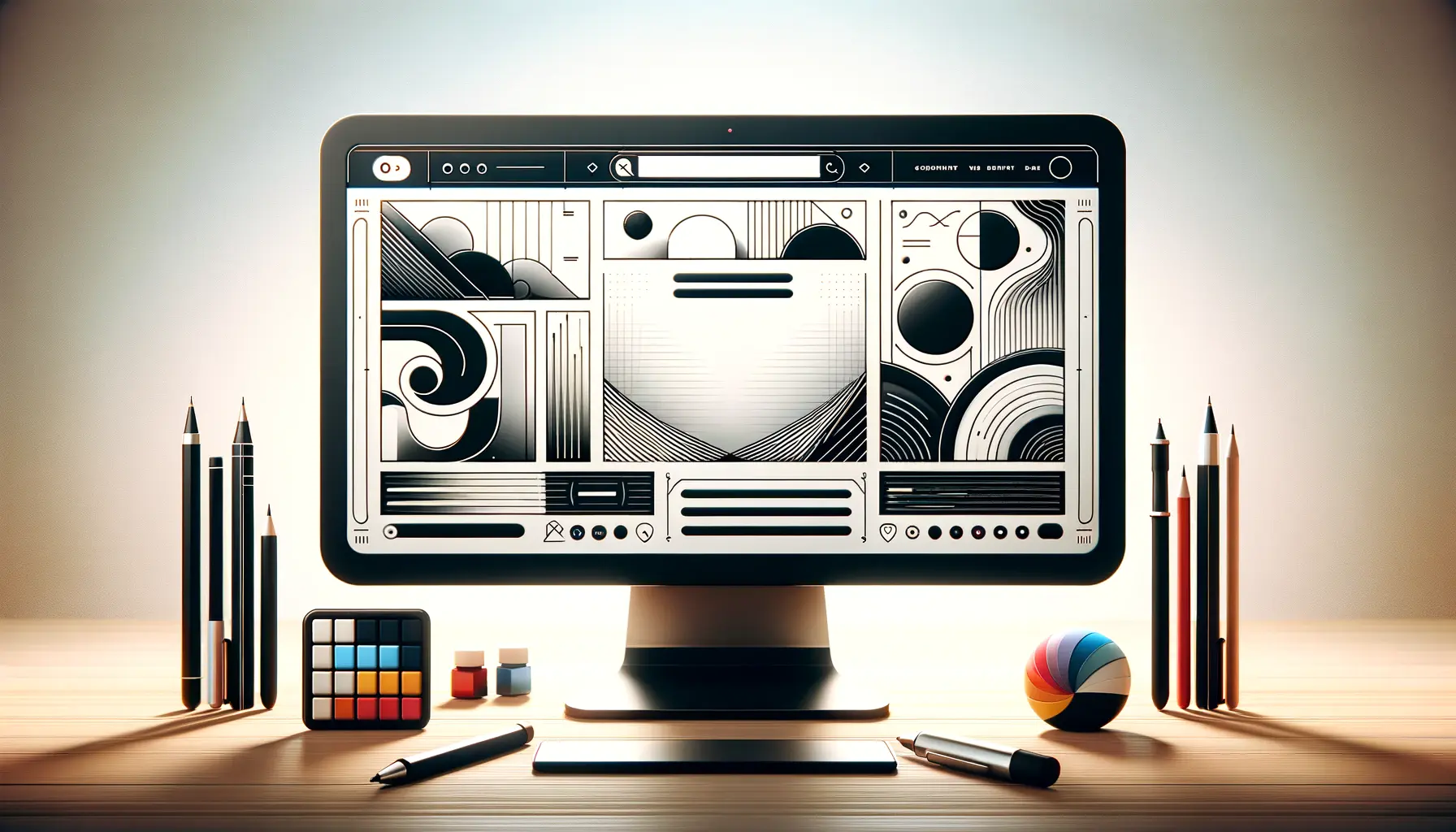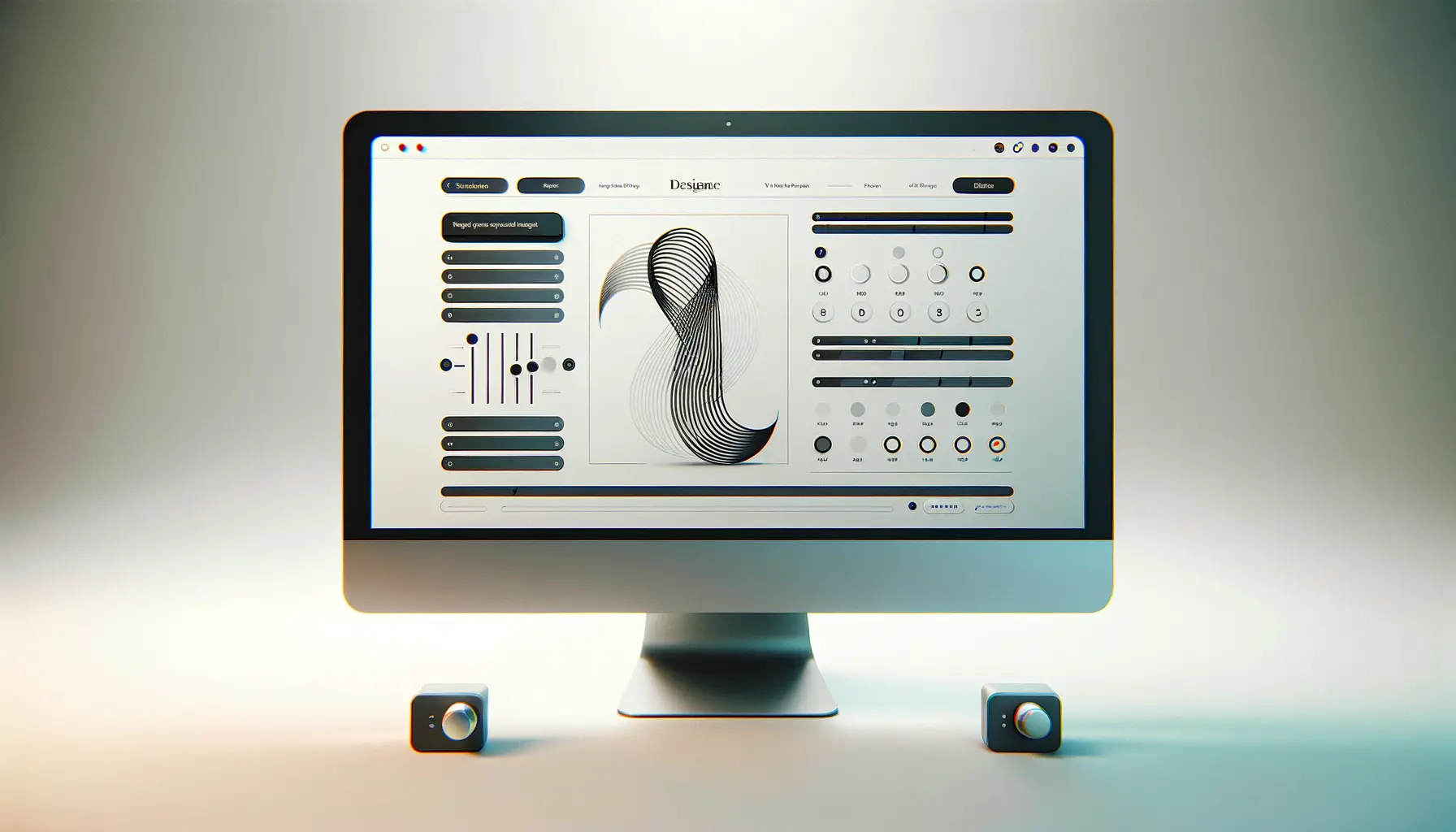The digital landscape is continually evolving, with web design at the forefront of showcasing creativity, innovation, and aesthetic sophistication.
Among the myriad of styles that have captivated the attention of designers and audiences alike, the integration of New Baroque fonts into web aesthetics stands out as a testament to the blend of historical elegance and modern design principles.
This article delves into the essence of New Baroque fonts, exploring their significance, application, and impact on creating a sophisticated web aesthetic that resonates with both the past and the present.
New Baroque, a term that evokes images of grandeur, opulence, and intricate detail, has found a new lease on life in the digital age.
The resurgence of this stylistic font in web design is not merely a nod to the past but a bold statement of blending tradition with modernity.
By integrating New Baroque fonts into websites, designers can infuse a sense of sophistication, elegance, and a unique character that sets a site apart from the minimalist trends that have dominated the web for years.
This article aims to guide you through the journey of incorporating New Baroque fonts into your web design projects, ensuring that your website not only stands out but also communicates a story of elegance and complexity.
- Understanding New Baroque Fonts
- Design Principles for Integrating New Baroque Fonts
- Impact of New Baroque Fonts on User Experience
- Best Practices for Web Typography with New Baroque Fonts
- Typography Trends Influencing New Baroque Fonts
- Case Studies: Successful Integration of New Baroque Fonts
- Exploring the Future of New Baroque Fonts in Web Design
- Embracing the Elegance of New Baroque Fonts in Modern Web Design
- New Baroque Fonts in Web Design FAQ
Understanding New Baroque Fonts
The History and Evolution of Baroque Typography
The Baroque era, spanning from the late 16th century to the early 18th century, was characterized by its dramatic, detailed, and highly ornate style.
This period in history was not just significant for its art and architecture but also for its contribution to typography.
Baroque typography was marked by intricate designs, elaborate flourishes, and a boldness that mirrored the opulence of the time.
As we delve into the New Baroque fonts, it’s essential to understand that these modern adaptations draw heavily from these historical roots, blending the old-world charm with contemporary design needs.
New Baroque fonts today are not mere replicas of their historical counterparts; instead, they are reinterpretations that maintain the essence of Baroque’s complexity and elegance while being optimized for digital platforms.
These fonts incorporate the characteristic flourishes and embellishments of the Baroque style but are designed to ensure readability and functionality on the web.
This evolution from paper to pixel demonstrates the timeless appeal of Baroque aesthetics and its relevance in today’s digital age.
Characteristics of New Baroque Fonts
New Baroque fonts are distinguished by several key characteristics that make them stand out in the realm of typography.
First and foremost, these fonts often feature intricate details and embellishments, such as swirls, curves, and elaborate serifs.
These decorative elements are not just for show; they add a layer of depth and sophistication to the text, making it an integral part of the website’s overall design aesthetic.
Another defining feature of New Baroque fonts is their dynamic range of weights and styles.
From bold and impactful to light and delicate, these fonts offer versatility to designers, allowing them to convey different moods and tones within the same typographic family.
This flexibility is crucial for web design, where the ability to maintain visual interest and hierarchy is paramount.
By carefully selecting and integrating New Baroque fonts, designers can create a cohesive yet varied visual narrative that enhances the user experience.
Remember, the key to effectively integrating New Baroque fonts into your web design lies in balance. While these fonts can add a layer of sophistication and elegance, it’s important to use them judiciously to avoid overwhelming the user and compromising on readability.
Design Principles for Integrating New Baroque Fonts
Integrating New Baroque fonts into web design requires a thoughtful approach that balances aesthetic appeal with usability.
The ornate nature of these fonts means they can easily become the focal point of a design, but they must also complement the content and functionality of the site.
Here are some key design principles to consider when working with New Baroque fonts:
Contrast and Readability
One of the most critical aspects of using New Baroque fonts is ensuring that the text remains legible and accessible to all users.
The intricate details of these fonts can sometimes hinder readability, especially at smaller sizes or on low-resolution screens.
To mitigate this, designers should:
- Use New Baroque fonts for headings or short pieces of text where their decorative features can be appreciated without compromising readability.
- Pair these fonts with simpler, more legible typefaces for body text to create a contrast that highlights the beauty of the Baroque style while ensuring the content is easy to read.
Harmony with Design Elements
New Baroque fonts carry a strong visual presence that needs to be harmoniously integrated with other design elements on the website.
This includes:
- Matching the font’s style with the website’s color scheme and imagery to create a cohesive look and feel.
- Considering the overall theme of the website to ensure the font complements rather than clashes with the design. For instance, a website with a minimalist aesthetic might not be the best fit for an ornate Baroque font.
Utilizing White Space
The use of white space is particularly important when incorporating elaborate fonts into a design.
Adequate spacing around text:
- Helps to prevent the design from feeling cluttered or overwhelming, allowing the intricate details of the New Baroque fonts to stand out.
- Improves readability by defining clear separation between headings, subheadings, and body text.
Scaling and Responsiveness
In the age of responsive design, it’s essential to ensure that New Baroque fonts scale effectively across different devices and screen sizes.
Designers should:
- Test the font’s appearance on various devices to ensure that the decorative elements do not become lost or overly dominant on smaller screens.
- Adjust font sizes and line spacing as needed to maintain readability and aesthetic appeal across all viewing platforms.
Incorporating New Baroque fonts into your web design can transform the user experience, adding a layer of sophistication and historical elegance. However, it’s crucial to apply these design principles to ensure that the site remains accessible, functional, and visually cohesive.
Impact of New Baroque Fonts on User Experience
The choice of typography on a website goes beyond mere aesthetics; it significantly impacts user experience (UX), influencing how users perceive and interact with the content.
New Baroque fonts, with their distinctive style and flair, can play a pivotal role in shaping this experience.
Here’s how these fonts can affect UX:
Emotional Connection and Brand Identity
New Baroque fonts can evoke a sense of elegance, sophistication, and exclusivity, contributing to a strong emotional connection with the audience.
This emotional resonance is crucial for:
- Enhancing brand identity: The unique style of New Baroque fonts can help establish a memorable brand identity that stands out in a crowded digital landscape.
- Creating an immersive experience: By aligning the font style with the brand’s personality and values, designers can create a more cohesive and immersive user experience.
Navigation and Readability
While New Baroque fonts add a layer of visual interest to a website, their impact on navigation and readability is a double-edged sword.
To ensure a positive user experience, it’s essential to:
- Use these fonts strategically for headings and call-to-action buttons where they enhance the visual hierarchy without compromising navigational clarity.
- Balance ornate fonts with simpler, more readable fonts for body text, ensuring that users can easily navigate and understand the site’s content.
Website Performance and Loading Times
The intricate details of New Baroque fonts can sometimes lead to larger file sizes, potentially affecting website loading times.
Optimizing font files and ensuring they are:
- Properly compressed without losing quality.
- Loaded efficiently with modern web technologies.
can mitigate any negative impact on site performance, maintaining a smooth and responsive user experience.
Accessibility Considerations
Ensuring that your website is accessible to all users, including those with disabilities, is a critical aspect of UX design.
When incorporating New Baroque fonts, consider:
- Contrast ratios: Ensure that the font color contrasts sufficiently with the background to be readable by users with visual impairments.
- Alternative text and font scaling: Provide alternatives for users who may need to override the website’s fonts with their browser settings for better readability.
The thoughtful integration of New Baroque fonts can significantly enhance the user experience, creating a visually appealing and emotionally resonant website that aligns with the brand’s identity and values. However, it’s crucial to balance aesthetic choices with practical considerations like readability, navigation, performance, and accessibility to ensure a positive impact on UX.
Best Practices for Web Typography with New Baroque Fonts
Employing New Baroque fonts in web design is an art that requires a delicate balance between form and function.
To harness their full potential without compromising on user experience, several best practices should be followed.
These guidelines ensure that the integration of New Baroque fonts enhances the website’s aesthetic and usability.
Selecting the Right Font for Your Project
Not all New Baroque fonts are created equal, and choosing the right one is crucial for your project’s success.
Consider the following:
- Font complexity: Opt for fonts that strike a balance between ornate details and readability.
- Project alignment: Ensure the font’s style complements the overall theme and purpose of your website.
- License and usage rights: Verify the font’s licensing to ensure it can be legally used on your website.
Integrating Fonts with Web Design Elements
The integration of New Baroque fonts should be harmonious with other design elements.
Achieve this by:
- Color schemes: Pair fonts with color palettes that enhance readability and aesthetic appeal.
- Imagery: Use images and graphics that complement the font’s style, creating a cohesive design language.
- Layout: Design layouts that allow the fonts to shine without overwhelming the content or the user.
Optimizing for Performance and Accessibility
While aesthetics are important, performance and accessibility cannot be overlooked.
Ensure a seamless user experience by:
- Font loading strategies: Implement techniques like font swapping or subsetting to improve loading times.
- Accessibility features: Use fonts that support a wide range of characters and include accessibility options for users with disabilities.
Maintaining Readability Across Devices
In today’s multi-device world, ensuring your text is legible across all platforms is essential.
This involves:
- Responsive font sizes: Use relative units for font sizes to ensure they scale appropriately on different screens.
- Testing on multiple devices: Regularly test your website’s typography on various devices to identify and address any readability issues.
Adhering to these best practices when incorporating New Baroque fonts into your web design projects can significantly enhance both the aesthetic appeal and functionality of your website, creating a memorable and positive experience for all users.
Typography Trends Influencing New Baroque Fonts
The dynamic world of web typography is constantly evolving, with new trends emerging that influence the use and perception of New Baroque fonts.
Understanding these trends is crucial for designers looking to stay ahead of the curve and integrate New Baroque fonts into their projects effectively.
Here’s a look at some of the current trends shaping the use of these ornate fonts in web design.
Increased Emphasis on Unique Brand Identities
As the digital space becomes increasingly crowded, brands are seeking ways to stand out.
New Baroque fonts, with their distinctive and elegant characteristics, offer a powerful tool for creating unique brand identities.
This trend towards differentiation through typography encourages the use of New Baroque fonts to convey luxury, sophistication, or a vintage aesthetic, depending on the brand’s personality.
Combining Modern and Historical Elements
There’s a growing trend in web design to blend modern design principles with historical elements.
New Baroque fonts are at the forefront of this trend, offering a bridge between the past and present.
Designers are increasingly integrating these fonts into contemporary layouts, pairing them with minimalist elements, and using modern color schemes to create a striking contrast that captivates users.
Focus on Accessibility and Readability
While aesthetics are important, there’s a rising trend towards ensuring web content is accessible and readable for all users.
This has implications for the use of New Baroque fonts, pushing designers to find ways to incorporate these fonts without compromising on usability.
Techniques such as using these fonts for headings or decorative elements, while keeping body text in more readable fonts, are becoming more prevalent.
Adaptive and Responsive Typography
With the variety of devices and screen sizes available today, adaptive and responsive typography has become a necessity.
New Baroque fonts are being optimized for flexibility, allowing them to be used in a wide range of contexts without losing their aesthetic appeal.
This trend towards responsive design ensures that New Baroque fonts can be effectively integrated into web designs that look great on any device.
The influence of these typography trends on the use of New Baroque fonts highlights the importance of balancing innovation with tradition. By staying informed about these trends, designers can leverage New Baroque fonts to create web experiences that are both visually stunning and aligned with modern design practices.
Case Studies: Successful Integration of New Baroque Fonts
Examining real-world examples provides valuable insights into the successful integration of New Baroque fonts in web design.
These case studies highlight the strategic use of these fonts to enhance brand identity, user engagement, and overall aesthetic appeal.
Let’s delve into a few instances where New Baroque fonts played a pivotal role in the design strategy.
Luxury Brand Websites
Many luxury brands have embraced New Baroque fonts to convey a sense of elegance and exclusivity.
For instance, a high-end fashion retailer used a New Baroque font for its logo and headings, paired with minimalist body text, to create a striking contrast.
This approach:
- Reinforced the brand’s upscale image.
- Improved user engagement by making the site visually compelling.
- Ensured readability by reserving the ornate font for select areas.
Cultural and Historical Institutions
Websites for museums, galleries, and historical societies often use New Baroque fonts to reflect their heritage and draw in audiences interested in history and culture.
A notable museum’s website featured a New Baroque font in its navigation menu and exhibit titles, achieving:
- A thematic alignment with the museum’s collections.
- An immersive user experience that starts from the first click.
- Enhanced navigational clarity by using the font judiciously.
Themed Event Promotions
Event websites, especially those promoting baroque-themed galas or classical music concerts, have successfully used New Baroque fonts to set the tone and attract the right audience.
By integrating these fonts into their promotional materials and online presence, event organizers were able to:
- Create a cohesive and engaging theme that resonates with potential attendees.
- Use visual storytelling to provide a preview of the event’s atmosphere.
- Maintain user friendliness by balancing ornate fonts with simpler text for details and instructions.
These case studies demonstrate the versatility and impact of New Baroque fonts across different sectors. By carefully considering the font’s application, designers can enhance the visual identity of a website and create a memorable user experience that aligns with the brand’s goals and audience expectations.
Exploring the Future of New Baroque Fonts in Web Design
The integration of New Baroque fonts into web design is not just a passing trend but a reflection of the broader movement towards more personalized, expressive, and emotionally resonant digital experiences.
As we look to the future, several factors will influence the continued use and evolution of New Baroque fonts in web design.
Understanding these elements can help designers anticipate changes and leverage these fonts effectively.
Technological Advancements in Typography
Advancements in web technologies and typography tools will further facilitate the use of intricate fonts like New Baroque.
Improved font rendering engines and optimization techniques will ensure that these fonts can be used without compromising performance or accessibility.
This means:
- Broader adoption across different types of websites.
- Enhanced creative possibilities without technical constraints.
Increased Focus on Brand Differentiation
As the digital landscape becomes increasingly competitive, brands will continue to look for ways to stand out.
New Baroque fonts offer a unique opportunity for brand differentiation, allowing companies to convey their identity and values in a visually distinctive manner.
This trend will likely result in:
- More brands adopting New Baroque fonts as part of their visual identity.
- A greater variety of fonts being developed to meet this demand.
Emerging Design Trends and User Preferences
User preferences and design trends are ever-evolving, with a growing appreciation for aesthetics that blend modernity with historical elements.
New Baroque fonts sit at the intersection of this trend, offering a timeless appeal that can adapt to various styles and themes.
Future design trends may see:
- An increase in the blending of styles, with New Baroque fonts playing a central role.
- A greater emphasis on storytelling through typography, where New Baroque fonts add depth and character to digital narratives.
Accessibility and Inclusivity in Design
As awareness of the importance of accessibility and inclusivity in design grows, the use of New Baroque fonts will need to be balanced with these considerations.
Designers will be challenged to find innovative ways to incorporate these fonts without sacrificing usability for all users.
This could lead to:
- Development of more readable New Baroque font variations.
- Improved guidelines and best practices for using ornate fonts in accessible design.
The future of New Baroque fonts in web design is bright, with endless possibilities for creativity and expression.
By staying informed about technological advancements, brand differentiation strategies, emerging design trends, and accessibility considerations, designers can continue to push the boundaries of what’s possible with typography on the web.
Embracing the Elegance of New Baroque Fonts in Modern Web Design
The exploration of New Baroque fonts within the realm of web design reveals a fascinating intersection of history, aesthetics, and technology.
As we’ve journeyed through the intricacies of integrating these ornate fonts into contemporary websites, it’s clear that New Baroque fonts offer more than just a stylistic choice—they embody a bridge between the rich opulence of the past and the sleek, user-focused design ethos of today.
This conclusion aims to encapsulate the essence of New Baroque fonts in web design, offering a forward-looking perspective on their role in shaping digital experiences.
The Art of Balancing Aesthetics and Usability
One of the central themes that has emerged is the importance of balancing the aesthetic allure of New Baroque fonts with the practical considerations of usability and accessibility.
The successful integration of these fonts into web design hinges on a nuanced understanding of typography’s impact on user experience.
Designers are tasked with the challenge of harnessing the decorative potential of New Baroque fonts while ensuring that websites remain accessible, navigable, and enjoyable for all users.
This balance is not static but evolves with changing web standards, user expectations, and technological capabilities.
Future Directions and Innovations
Looking ahead, the future of New Baroque fonts in web design is ripe with potential for innovation and creativity.
Technological advancements promise to expand the possibilities for font rendering and optimization, making New Baroque fonts more versatile and adaptable to various digital contexts.
Moreover, as brands increasingly seek to differentiate themselves in a crowded digital landscape, the unique character of New Baroque fonts can serve as a powerful tool for crafting memorable and distinctive online identities.
However, the trajectory of New Baroque fonts will also be shaped by the ongoing dialogue between design trends and user preferences, highlighting the need for designers to remain agile and responsive to the shifting digital zeitgeist.
Conclusion
In conclusion, New Baroque fonts represent a dynamic and multifaceted element of web design, capable of adding depth, elegance, and personality to digital spaces.
As we’ve seen, their successful integration requires a thoughtful approach that respects the principles of good design and the diverse needs of web users.
Looking forward, the continued evolution of New Baroque fonts in web design will undoubtedly contribute to richer, more engaging online experiences that celebrate the confluence of artistry and innovation.
In this digital age, where the boundaries of design are continually expanding, New Baroque fonts stand as a testament to the enduring power of typography to shape our digital world.
Quality web design is key for a great website! Check out our service page to partner with an expert web design agency.
New Baroque Fonts in Web Design FAQ
Explore commonly asked questions about integrating New Baroque fonts into modern web design, offering insights and practical advice.
New Baroque fonts blend historical elegance with modern design, featuring intricate details and elaborate flourishes suitable for digital platforms.
They add sophistication and uniqueness to websites, helping brands stand out with a distinctive identity that evokes elegance and luxury.
Select based on project alignment, font complexity, and legal usage rights to ensure the font complements your website’s theme and purpose.
Yes, their intricate details can impact readability, especially at smaller sizes, so they’re best used for headings or decorative elements.
Optimize font files and use modern web technologies for efficient loading, ensuring the fonts do not slow down your website.
While versatile, they best suit luxury, fashion, and cultural websites that aim to convey elegance, sophistication, or a historical vibe.
They can enhance brand identity and emotional connection, but must be balanced with readability and navigational clarity for a positive UX.
Expect more brands to adopt them for differentiation, alongside technological advancements that improve their adaptability and performance online.
